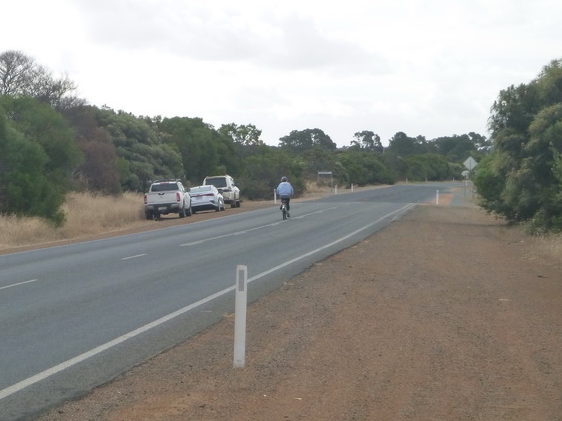Safety For Cyclists On High-speed Rural Highways
An observation from a recent road safety audit
The location of a recent road safety audit is a staggered intersection of two local roads with a rural highway. The site is located on the outskirts of a locality. Various vehicles, including a large proportion of road trains, travel on this section of highway at speeds of 110 km/h.
There is 270 stagger between the two roads. The highway is an undivided two-lane road with 3.5m wide lanes and no sealed shoulders. There is no lighting provided.
Everything is rather typical for a rural WA location. Except for anecdotal evidence of cyclists using this section of highway while traveling between the two local roads. In fact, this evidence was crucial in the audit recommending the provision of protected cycling facilities.
Cyclists on the highway
During the site visit there was an opportunity to observe the issue first hand. A cyclist, appearing to be a local resident, arrived from one of the side roads.

The cyclist turned left and after a slow and (what appeared to be) agonizingly long ride along the left edge of the road progressed to turn right by positioning themselves centrally and rode the last 50 m or so along the centreline before turning right (with no indication) into the side road. The same movement, in reverse, was repeated some 30 min later.
Cycling and safety
Now, one could and should wonder or argue why they are no appropriate facilities provided. This is, apparently, a well known location that is (relatively) frequently used by cyclists. Hopefully, the future intersection upgrade will assist with this issue. Conducting a design stage road safety audit will help with this.
However, on the other hand, there is the question about where is the sense of self-preservation for some of these road users?
The cyclist did wear a helmet. However, the usefulness of this safety measure is questionable under the circumstances. A hi-vis vest would probably be more effective.
The cyclists could have ridden on the left side of the road for as long as possible before stopping and crossing perpendicularly, rather than exposing themselves to the vehicles hurtling right behind their back and leaving the drivers with no way of maneuvering out of the perilous situation.
This section of the highway features wide unsealed shoulders. Admittedly, these were not in the best condition. However, cycling over the shoulders between the two side roads would seem like a logical and safer option. The condition of the shoulders could have been improved rather promptly if the issue had been raised with the road authority in the past. This could have provided a significantly safer alternative to the existing situation that is a serious (fatal) incident waiting to happen.
The bottom line question really is – even if/when improved facilities are provided, will all the cyclists use them as intended or will they just continue with their old ways?


